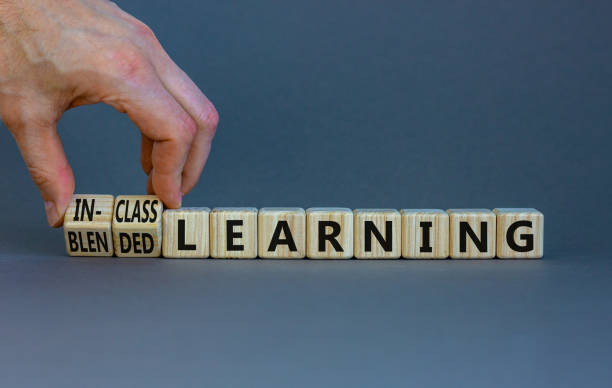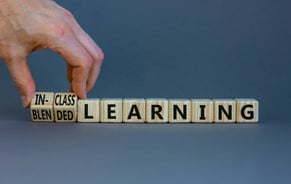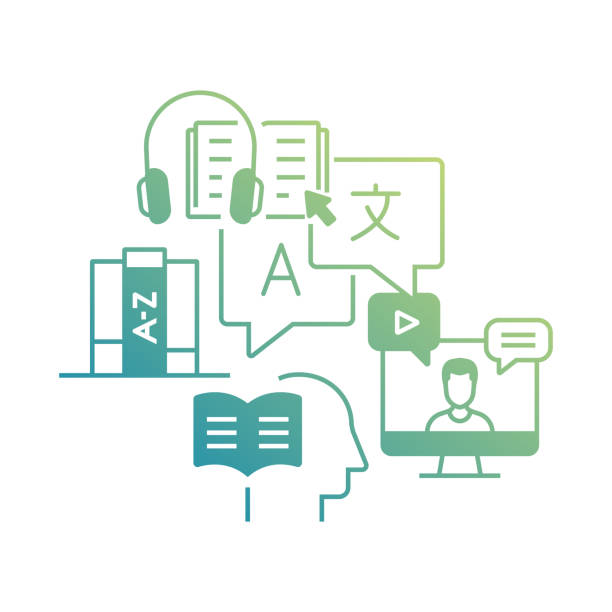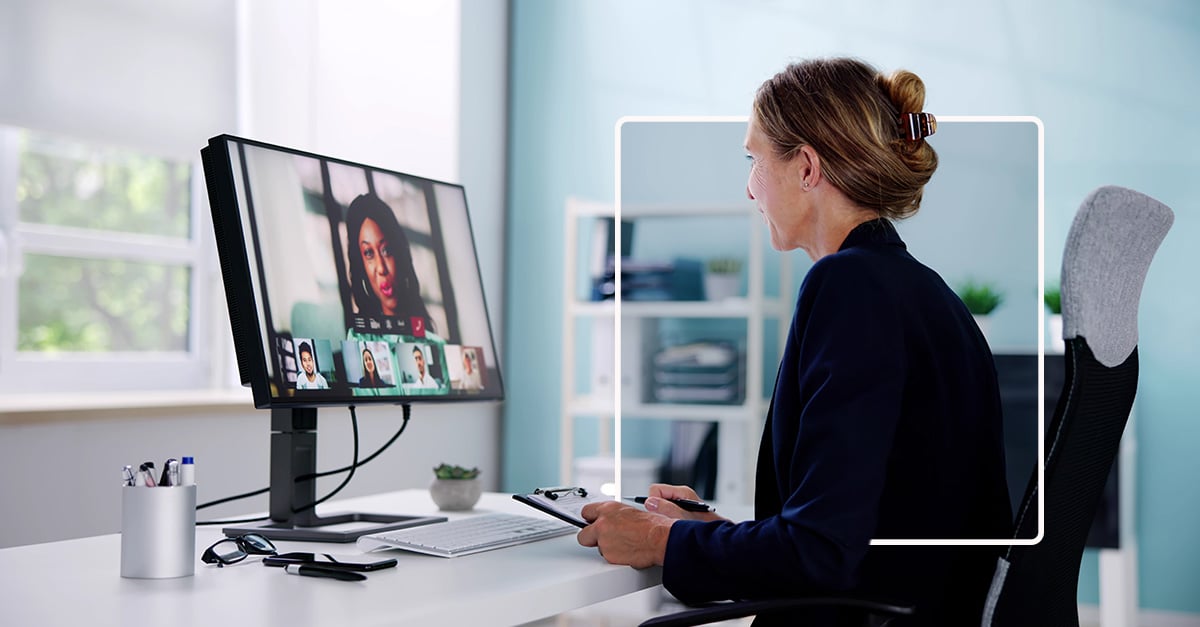4 min read
With Hybrid Learning, the 5 Moments of Need® Are More Important than Ever
 Jennifer Hofmann
:
Jul 11, 2022 7:30:00 AM
Jennifer Hofmann
:
Jul 11, 2022 7:30:00 AM

Thanks Conrad and Bob!
Read to the end for some personal advice on how to apply this approach from Bob Mosher
Continuous Learning Everywhere and Anytime
As early as 2019 – Josh Bersin identified the modern learner as being overwhelmed, distracted, and impatient. And, on the upside, the modern learner (in 2019) was untethered, accessing information on-demand, collaborative, and empowered. 
Fast forward to now…I think overwhelmed, distracted, and impatient apply more than ever.
Untethered? What a great way to define the hybrid workplace!
As remote and hybrid work become the norm around the globe, we need to be creative and strategic in designing hybrid learning experiences that recognize where and when people are learning, while blending together technologies in a way that makes learning authentic and accessible. These experiences also can’t end when the LMS issues a badge of completion…hybrid blended learning is a journey that goes beyond a course. We need to create a culture of continuous learning.
Today's learner is resilient and embodies change and possibility, giving us the opportunity to shake up the way we’ve been doing the same old thing, and breathe new breath into the way we serve our learners in their moments of learning need.
We know that modern learners have a lot of choices in how they can learn, and we need to better understand and engage them as partners in this learning landscape. It is not enough to take what we used to teach in the face-to-face classroom, throw it in Zoom, and see if it sticks.
We need to really think about what our learners need (and when they need it), so that we can prevent them from being overwhelmed, mitigate those distractions, and help to make sure that they don’t lose patience.
In other words, we need to foster environmental engagement – a challenge when learners’ environments are in constant flux.
5 Moments of Need®
We turn to Dr. Conrad Gottfredson and Bob Mosher’s Five Moments of Need® to better understand our modern learners. The 5 Moments of Need® is a framework for gaining and sustaining effective on-the-job performance of employees and work teams. (Learn more directly from the source: https://www.5momentsofneed.com/)
The premise is that we to consider 5 different scenarios when designing content:
- New - When learning for the first time
- More - When learning more
- Apply - When remembering and/or applying what’s been learned
- Solve - When things go wrong
- Change - When things change
These five 'moments' together are what we need to consider when creating a blended learning campaign. When we identify them for every learning outcome, we create opportunities for engagement. Remember, learning happens all the time, and we need to plan for that!
Let’s quickly explore these moments and what we can do to serve and perpetually engage our learners in our modern blended learning experience, and what additional considerations to keep in mind for the hybrid workplace.
-
New - We all know what it’s like to learn something new. For example, a new customer service agent will need training before she gets started. She arrives at work on her first day for a full day of onboarding training – designed to help her learn (for the first time) what she needs for her job. If the employee is remote, onboarding will likely take place in a virtual learning environment. The program design needs to address how this remote environment impacts the learning, and create reference tools and community connections that can be easily accessed, so this individual doesn’t feel isolated.
-
More - Suppose a supervisor is doing performance reviews for the first time. Sure, she had job training, but she now needs to learn a bit more in order to give her reports direct feedback for the first time. She might refer to online resources, reach out to a mentor, or attend a formal training event.
-
Apply - Let’s go back to our customer service agent, who needs to tap back into that onboarding training on a regular basis. She’s not going to use everything she learned every day. She’s going to be remembering and applying what she learned months ago, as she learns and grows in her new job. What resources will be available for her to refer back to? If these moments were integrated into the design process, she will have access to materials she received initially, and additional resources to explore when she needs to apply what she learned previously.
-
Solve - We know that not everything goes the way we want it to. Let’s go back to our new supervisor who is providing feedback during an employee performance review session. What if the meeting doesn’t go as planned? She used the same meeting format that she learned in training with other employees, but one meeting has just gone way off the tracks. At this point, our learner needs resources that can help her recover from this meeting, learn from the experience, and regain her professional confidence – easily accessible and standalone resources.
-
Change - Going back to our customer service agent example, suppose a new system is put into place and every agent needs to update their skills. The change may be big enough to require a full in-person training program, or an eLearning module and appropriate job aids and informative resources will be enough to help them use the new system. If we anticipate that change, we can embed training in the moment of need – accessible no matter WHERE and WHEN the learning happens.
Keep these five moments of learner need in mind as you work through needs analyses in your own work, and contemplate them as you progress along your individual learning pathways.
Now more than ever – we need to be ready to support learners where and where they need it – and we can’t just provide formal training – we need create a culture of continuous learning – and not let the LMS dictate when learning is done.
And finally, some advice from Bob
As a bonus, Bob Mosher shared the following with the InSync community during a 2019 webinar. To me, it rings true more than ever:
-
“Embed content in the workflow so it’s readily available at the moment of apply.” Learning only has an impact if learners can access it. Designers need to not only create the right tools, but as Bob urges, to also incorporate them where and when learners will look for them.
-
Ensure resources are “contextual according to specific roles and varying access need.” Context and relevancy impact the usefulness of performance support. Bob encourages designers to use them to their advantage for improved learner experience. The InSync Team agrees!
-
Create content with “just enough in the form needed to effectively perform inside the business process.” Resist the urge to supply learners with everything and the kitchen sink. SMEs say everything matters, but experience proves it overwhelms learners. Bob has witnessed that the best results occur when designers pare down to the most critical resources.
-
Remember that “trusted and curated content…supports a common language and enables meaningful collaboration.” Instructional design secret: in-house designers do not need to create every piece of content in a training program. Turn to expert-written articles, outside blogs, and cutting-edge videos and pull them into designs. Curate them by providing context around their value. It helps keep resources current and modern, a key to learners’ perception of applicability.
Would you like to keep your learners from feeling overwhelmed, distracted, and impatient? You can master this challenging training environment with InSync Training.

Fall in Love with Blended Learning, Like I Did in 1975
I am a product of Public Television. As a child, my hours of daytime television were limited to the line-up on local Channel 13. Mr. Rogers’...

7 Considerations When Implementing a Hybrid Virtual Learning Strategy
Mastering Hybrid Learning In May 2023, the Wall Street Journal reported that the number of companies requiring employees to work full-time in the...

